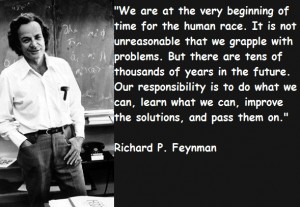You may have already felt that you are not making progress when you study, if this is your case, you will like to know the Feynman technique that we present to you in this article.
You may have wondered why your learning pace is so slow or even desperate after several unsuccessful attempts to memorize the meaning of a concept. Retaining information in our minds is sometimes not that simple.
- To help you in this regard.
- We present to you the Feynman technique.
- A simple and effective strategy to acquire new knowledge more quickly and deeply.
- Read on to find out what it’s all about.
“If you can’t explain something in a simple way, you don’t understand it enough. -Albert Einstein-
Richard Feynman was an American theoretical physicist. He is known for his work in formulating using linear integrals of quantum mechanics, theory of quantum electrodynamics and the physics of the superfluidity of subcooled liquid helium, as well as Parton’s model in particle physics.
For his contributions to the development of quantum electrodynamics, Feynman, along with Julian Schwinger and Sin-Itiro Tomonaga, received the Nobel Prize in Physics in 1965. In addition, according to a 1999 survey by the British journal Physics World, Feynman was ranked in the top ten physicist of all time, according to a 1999 survey by the British journal Physics World.
“I don’t know what’s wrong with people: they don’t learn by understanding, they learn differently, by routine or in some other way. How fragile is your knowledge!? -Richard Feynman-
Feynman’s technique was explained by his biographer James Gleick in the book Genius: The Life Science of Richard Feynman. By using this technique, anyone can acquire new knowledge effectively if they wish. In fact, it is also a powerful study tool to prepare for any exam.
“What I can’t create, I don’t understand” – Richard Feynman-
James Gleick tells how Feynman opened his new notebook and wrote on the cover “Book of Things I Don’t Know Yet. “Feynman was reorganizing his knowledge. And it is that the physicist always tried to get to the heart of every subject he studied, he intended to write in this notebook all the explanations of the concepts he developed in his research.
Maybe we can think that we could do the same with a friend, we’d have to tell you what we’ve learned to memorize it and understand it better every time we explain it to a friend like that, yet we don’t always have a friend like that. Helpful and patient friend. That’s why Feynman has developed a variant technique, but just as effective: learning by explaining.
The basic idea of this technique is to actively read the study material and then try to explain it in a simple way, as if we were talking to a child or someone who knows him less than we do. Subject. Thus, this form of learning is valued as an active methodology, because to explain the subject we are studying we will have to use another language and different strategies. In this way, it will be much easier for us to detect errors and learn more effectively.
“The best way to understand something is to explain it. – Richard Feynman-
Feynman’s learning technique consists of 4 simple steps, let’s see what they are.
To begin with, we must take a piece of paper and write the name of the concept we are studying, for example, if we study the Pythagorean theorem, we must write it at the top of the page or article.
Once the concept is written, it must be described in our own words and in simple language, as if we were explaining it to someone else.
If we follow the example of the Pythagorean theorem, we should write something like “in a right triangle, the square of the hypotheuse is equal to the sum of the squares of the side”.
The third step is to review everything we write to identify parts that are not fully explained, confusing or misspelled, for this we can go back to our notes or even look for new information on the subject. It is also useful to use examples that reinforce knowledge.
The final step is to make a final review of the writing, so if we use a very complex language we can rewrite the text to make it simpler and more intelligible, for this we can use metaphors or analogies, the important thing is to make sure that anyone can understand the discourse.
If, after following these four simple steps, our explanation is not yet understood, we may not have fully understood what we have studied. In this case, we need to start the process again.

